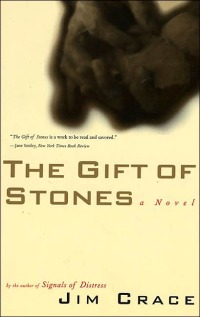The Melody by Jim Crace
 Wednesday, June 20, 2018 at 7:46AM
Wednesday, June 20, 2018 at 7:46AM 
Published by Doubleday/Nan A. Talese on June 19, 2018
Alfred (Mr. Al) Busi, a widowed, retired singer of modest fame, is at war with the realtors (including his nephew) who want him to sell the villa he has occupied his entire life and with the animals that tip over his garbage containers at night. Responding to frightening noises, he is clawed and bitten, perhaps by a cat or a feral child, and is nursed by the sister of his deceased wife as he tries to decide whether he longs for her or just for a life that isn’t lonely. The attack is only the start of a bad day that will soon include a robbery with another beating and an apparent end to Busi’s legacy as the town’s most valued singer.
Busi is philosophical rather than self-pitying as he considers the unfavorable ways in which his life is changing as he grows old. It certainly isn’t improved by the rabies shot he endures, by his nagging fear of a painful death after refusing the rest of the shots in the series, or by the journalist who mocks his belief that he was mauled by a naked boy. Where Busi was once greeted by smiles as he strolled through town, people look at his bandages, see him hunched over from the rabies shot as he walks, and view him with suspicion, if not derision. He has become “a sack of grimaces and reflexes, of tics and twitches, spasms and convulsions.”
His neighbors and nephew assure Busi that his home is about to be torn down, to be replaced by a planned development of pricey homes with ocean views known as The Grove, one of which has been promised to Busi. But it is Busi’s life that will be torn down when the journalist writes his article. Busi might be an icon, but the town discovers that icons are easily replaced. How Busi deals with his many losses, and how (by extension) the elderly cope with loss, is an underlying theme.
Property development that benefits developers at the expense of people who lose their homes (and at the expense of habitats for local fauna) is another theme. Local media cannot focus on “disparities between the ways in which the poor were treated in town and how the prosperous were sheltered and defended” because media cannot survive if they attack wealth and privilege. While “each gain is paid for with a loss,” only the gains are reported. The developers scheme to destroy the woods in which the ironically named The Grove will be built, while touting themselves as environmental champions. The homeless are evacuated from the aptly named Poverty Park, unseen and unremembered, so that the park can become a refuge for the wildlife displaced by the construction of The Grove. On the bright side, if one exists, the novel suggests that the people who are best positioned to survive an inevitable apocalypse are those who have been given “the gift of poverty,” for they have learned to scrounge like wild animals.
The first part of The Melody seems to be written in the third person, as an omniscient narrator tells us the inner workings of Busi’s mind, but there are hints that we are, in fact, hearing the first person perspective of a narrator who has been observing Busi closely. The second part, much shorter, takes place six years later, when Busi has turned 70. It is written in the first person, likely by the narrator of the novel’s first part. Jim Crace’s willingness to play with the conventions of the novel, perhaps to play with reader, is both interesting and unsettling. In the novel’s first part, we think we know Busi’s innermost thoughts, but perhaps we only know what the narrator has imagined those thoughts to be. The idea seems to be that we cannot be sure we know any person's thoughts, maybe not even our own.
The story’s many ambiguities (was Busi really attacked by a feral child? how reliable is the narrator’s account of Busi’s life?) give the reader ample opportunity to reshape the narrative, to decide what is true and false. Crace’s evocative prose makes it easy to picture the town, its quarrelsome residents, its flat-winged hawks and scavenging dogs. I’m not quite sure what point is served by the novel’s second part — the story could have ended without muddling it by shifting the point of view — but on the whole, I found great value in the contemplation of Busi’s senior years, reflective as they are of the fears and regrets and loneliness of so many people who are watching their productive life and relationships fade away in the rear-view mirror.
RECOMMENDED
